Unlock Your Child's Creativity: Crafting with Kids
In a world where screens dominate our children's attention, it's more important than ever to ignite their creativity through hands-on activities. Crafting with kids isn’t just about making something pretty; it’s a gateway to imagination and self-expression. When children engage in crafting, they’re not just creating art; they’re building skills that will last a lifetime. Think of crafting as a magical toolbox that equips kids with the ability to think outside the box, solve problems, and navigate their feelings. So, why should we prioritize crafting in our children’s lives? Let’s delve deeper into the importance of creative expression and how it can transform their development.
Understanding why creativity is essential for children's development can help parents and educators foster environments that encourage imaginative play and innovative thinking. Creativity is the bedrock of problem-solving and critical thinking. When children are allowed to explore their creative sides, they learn to approach challenges with a sense of wonder and curiosity. Imagine a child who, instead of feeling frustrated when they encounter a problem, sees it as an opportunity to invent a new solution. This shift in perspective is what creativity nurtures.
Crafting offers numerous benefits, including improved motor skills, enhanced problem-solving abilities, and increased self-esteem, making it a valuable activity for children of all ages. Through crafting, children learn to express their thoughts and emotions visually, which can be especially important for those who might struggle with verbal communication. As they create, they also develop patience and perseverance, learning that great things often take time and effort.
Engaging in crafts helps children refine their fine motor skills, which are crucial for tasks like writing, buttoning shirts, and using utensils. Activities such as cutting paper, gluing pieces together, and threading beads challenge their hand-eye coordination and dexterity. These skills are not just vital for crafting; they are foundational for everyday tasks. Think of fine motor skills as the building blocks of independence. The more children practice these skills, the more confident they become in their abilities.
Selecting age-appropriate materials ensures that crafting activities are safe and enjoyable, enhancing the overall experience for children. For toddlers, consider using non-toxic paints and large, easy-to-handle tools. As children grow, you can introduce more complex materials like scissors and small beads. The right materials can make all the difference in keeping kids engaged and excited about crafting.
Incorporating various techniques in crafts can further promote fine motor skill development, such as cutting, gluing, and threading. For example, a simple project like creating a collage can involve tearing paper, using scissors, and applying glue—all of which are fantastic for developing fine motor skills. By mixing these techniques into your crafting sessions, you can create a rich learning environment where children can thrive.
Completing craft projects can significantly boost a child's confidence, as they take pride in their creations and learn to express themselves artistically. This sense of accomplishment is invaluable; it teaches children that their efforts lead to tangible results. When they see their artwork displayed or shared with family, it reinforces their belief in their capabilities. Just like a gardener who nurtures a seed into a beautiful flower, children need the space and encouragement to grow and bloom.
Crafting can be tailored to suit various age groups, ensuring that all children can participate and enjoy the creative process. For toddlers, simple activities like finger painting and playdough can introduce them to the joy of crafting while enhancing sensory experiences. As children grow, you can engage them in more complex projects, such as DIY decorations or model building, which encourage critical thinking and collaboration.
Simple, hands-on activities like finger painting and playdough can introduce toddlers to the joy of crafting while enhancing sensory experiences. These activities not only engage their senses but also allow them to explore colors and textures in a fun, messy way. It’s all about the experience, not just the finished product!
More complex projects, such as DIY decorations and model building, can engage school-aged children, encouraging them to think critically and work collaboratively. These activities can be great for family bonding or playdates, as they promote teamwork and communication skills. Think of crafting as a way to build not just projects, but also relationships.
Using natural materials in crafting activities can inspire creativity while teaching children about the environment and the beauty of the world around them. Nature is a treasure trove of crafting supplies; leaves, stones, and twigs can all be transformed into artistic masterpieces. This practice not only fosters creativity but also instills a sense of respect and appreciation for nature.
Encouraging children to gather leaves, stones, and twigs for their crafts fosters a sense of exploration and connection with nature. It’s like a mini-adventure every time you step outside! As they collect these materials, they learn to observe their surroundings, sparking curiosity about the natural world.
Creating art with recycled or natural items not only promotes creativity but also instills values of sustainability and environmental responsibility in children. Projects like making bird feeders from old milk cartons or creating art from scrap paper teach kids the importance of reusing materials. It’s a win-win situation where creativity meets environmental consciousness.
- What age is appropriate for crafting? Crafting can start as early as toddler age with simple materials and can continue to be enjoyed throughout childhood and beyond.
- How can I encourage my child to craft? Set up a dedicated crafting space, provide a variety of materials, and participate in crafting activities together to spark their interest.
- Are there specific crafts for different age groups? Yes! Tailor activities to suit developmental stages, with simpler crafts for toddlers and more complex projects for school-aged children.
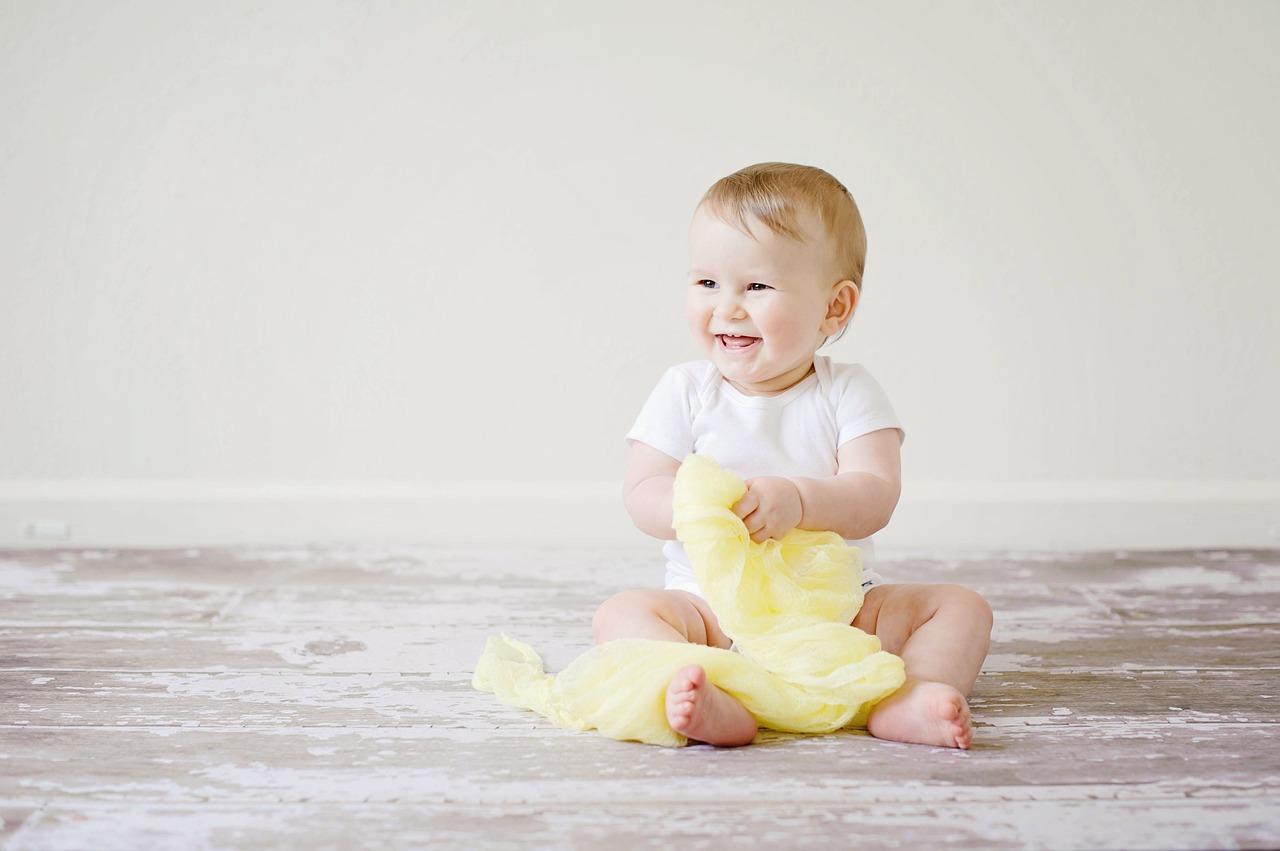
The Importance of Creativity in Childhood
Understanding why creativity is essential for children's development can help parents and educators foster environments that encourage imaginative play and innovative thinking. Creativity is not just about being able to paint a pretty picture or build a fantastic structure; it's about problem-solving, thinking outside the box, and expressing oneself in unique ways. When children engage in creative activities, they are not only having fun but also developing critical skills that will benefit them throughout their lives.
Research has shown that creativity plays a vital role in a child's overall development. It helps them to process their emotions, understand the world around them, and build relationships with others. When children create, whether through art, music, or storytelling, they learn to communicate their feelings and ideas effectively. This is crucial in a world that increasingly values innovation and original thought.
Moreover, fostering creativity in childhood can lead to improved academic performance. Studies indicate that children who engage in creative activities tend to perform better in subjects like math and science. This is because creative thinking encourages them to approach challenges from different angles, enhancing their ability to think critically and analytically. In essence, creativity is not just a luxury; it's a necessity in today's fast-paced, ever-changing world.
In addition, nurturing creativity can significantly impact a child's self-esteem. When children create something they are proud of, it gives them a sense of accomplishment. This feeling can be incredibly empowering, encouraging them to take risks and try new things. The act of creating allows children to express their individuality, making them feel valued and understood. As they see their ideas come to life, they learn that their thoughts and contributions matter, which is a powerful lesson that can shape their future.
To cultivate creativity in children, it's essential to provide them with the right tools and environment. This means offering a variety of materials that stimulate their imagination, allowing them the freedom to explore and experiment without fear of making mistakes. Here are some key aspects to consider:
- Encouragement: Always encourage your child's creative efforts, regardless of the outcome.
- Freedom: Allow them to express themselves freely without imposing too many rules.
- Variety: Provide diverse materials and experiences to spark their creativity.
By recognizing the importance of creativity in childhood, we can create a nurturing environment that not only enhances children's imaginative capabilities but also prepares them for a successful future. So, let's embrace creativity and watch our children thrive!
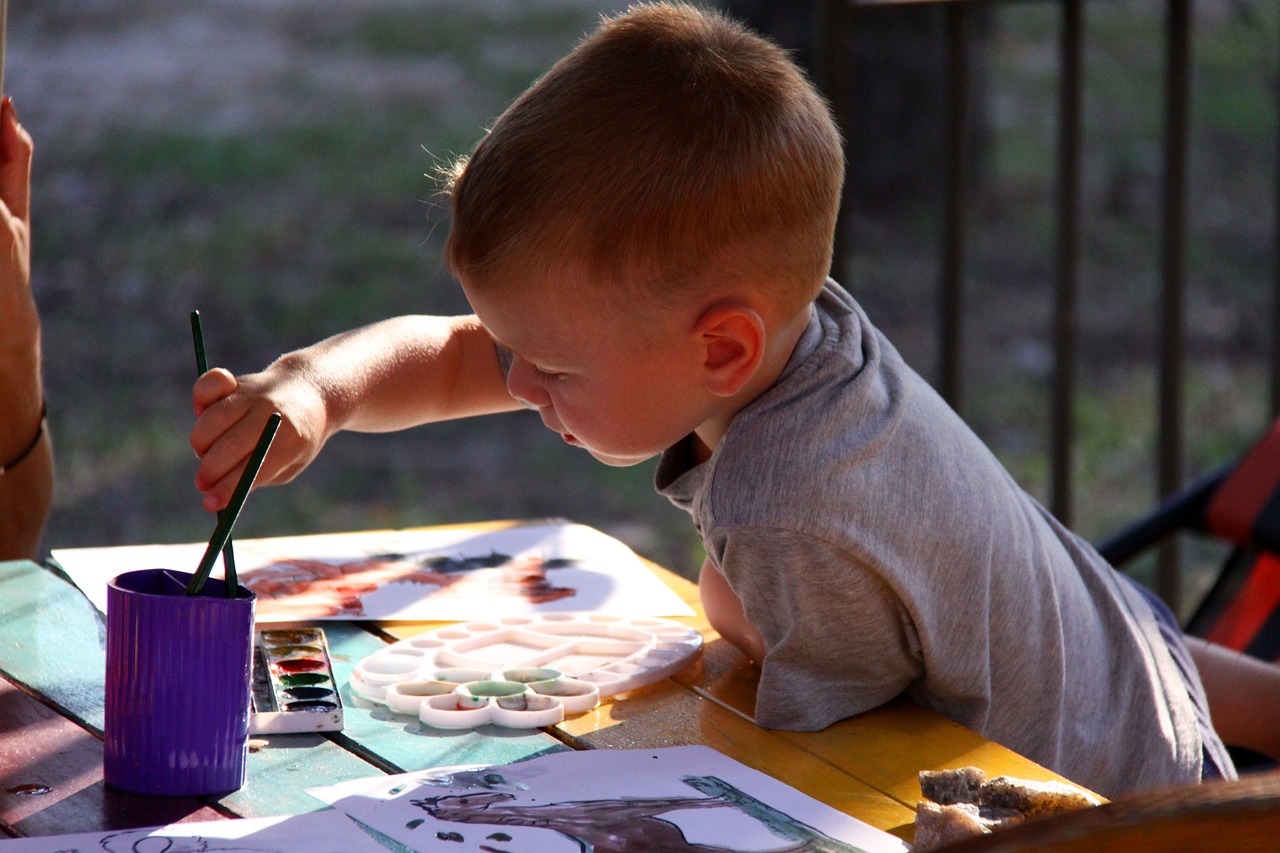
Benefits of Crafting for Kids
Crafting is not just a fun way for kids to spend their time; it’s a gateway to a world of benefits that can significantly enhance their development. When children engage in crafting activities, they are not merely playing; they are actively learning and growing. From improving fine motor skills to fostering creativity, the advantages of crafting are numerous and profound.
One of the most notable benefits of crafting is the improvement of fine motor skills. As children cut, glue, and assemble various materials, they practice the small movements that are essential for tasks like writing, buttoning shirts, and using utensils. These activities require precision and control, which can lead to enhanced dexterity. For instance, when a child uses scissors to cut paper, they are developing hand-eye coordination that will serve them well in many everyday activities.
Moreover, crafting encourages problem-solving abilities. When kids are faced with a crafting challenge, such as figuring out how to create a specific shape or how to attach two materials together, they must think critically and come up with solutions. This process not only boosts their cognitive skills but also teaches them resilience. If something doesn’t work out as planned, they learn to adapt and try again, which is a valuable life lesson.
Another significant advantage of crafting is the boost in self-esteem that comes from completing a project. When children see their finished product, whether it’s a painting, a sculpture, or a handmade card, they experience a sense of accomplishment. This feeling of pride can be incredibly empowering, encouraging them to express themselves artistically and take on new challenges with confidence. The act of creating something from scratch gives them a sense of ownership and individuality.
Additionally, crafting can serve as a wonderful social activity. When children craft together, they learn to collaborate, share ideas, and communicate effectively. This social interaction is crucial for developing interpersonal skills and building friendships. Working on group projects, like making decorations for a school event, can teach them about teamwork and the importance of listening to others’ perspectives.
In summary, the benefits of crafting for kids extend far beyond mere entertainment. It’s a holistic activity that nurtures fine motor skills, promotes problem-solving, enhances self-esteem, and fosters social connections. By encouraging your child to engage in crafting, you are not only providing them with a fun pastime but also equipping them with essential skills that will benefit them in various aspects of life.
- What age is appropriate for children to start crafting? Crafting can begin as early as toddler age with simple activities like finger painting or playdough. As they grow, more complex projects can be introduced.
- What materials are safe for children to use? Always choose age-appropriate materials. For toddlers, non-toxic, washable paints and large, easy-to-handle items are ideal. For older kids, you can introduce scissors, glue, and smaller pieces.
- How can I encourage my child to be more creative? Provide a variety of materials and give them the freedom to explore their ideas. Avoid overly structured projects that may stifle their creativity.

Fine Motor Skill Development
Engaging in crafts is not just a fun pastime for children; it plays a crucial role in developing their fine motor skills. These skills are essential for everyday tasks that we often take for granted, such as writing, tying shoelaces, and even using utensils during mealtime. When children manipulate various crafting materials, they are essentially training their hands and fingers to perform precise movements. This is akin to a pianist practicing scales—each movement builds strength and coordination, ultimately leading to greater mastery.
For instance, activities like cutting paper, gluing pieces together, and threading beads require a level of dexterity that can significantly enhance a child's motor skills. When a child cuts along a line or pastes shapes onto a canvas, they are not only creating art but also fine-tuning the muscles in their hands. It's fascinating how something as simple as crafting can lead to such profound developmental benefits!
To illustrate the impact of crafting on fine motor skills, consider the following table that outlines various crafting activities and their corresponding benefits:
| Crafting Activity | Fine Motor Skill Benefits |
|---|---|
| Cutting with Scissors | Improves hand-eye coordination and grip strength |
| Bead Stringing | Enhances dexterity and precision |
| Painting with Brushes | Develops control and wrist movement |
| Model Building | Encourages spatial awareness and manipulation skills |
When selecting crafting activities, it’s essential to choose age-appropriate materials that challenge yet do not frustrate your child. For toddlers, using larger items, like chunky crayons or big beads, can help them grasp and manipulate materials easily. As they grow older, you can introduce more intricate projects that require smaller components, thereby gradually enhancing their skills.
Incorporating various techniques into crafting can further promote fine motor skill development. For example, cutting not only hones a child's ability to use scissors safely but also teaches them about shapes and lines. Gluing requires them to apply the right amount of pressure and precision, while threading beads onto a string demands focus and coordination. Each of these activities is a building block in their developmental journey.
So, the next time you sit down to craft with your child, remember that you're not just creating a beautiful piece of art; you're also laying the foundation for their future success in various tasks. Crafting is a delightful combination of fun and learning, making it an invaluable tool in your child's growth.
- What age is appropriate to start crafting with my child? It's never too early! Simple activities can begin as young as 18 months, while more complex crafts can be introduced as they grow.
- How often should we engage in crafting activities? Regular crafting sessions—ideally a few times a week—can be beneficial for skill development and creativity.
- What materials are best for fine motor skill development? Materials like scissors, glue, beads, and various textured papers are excellent choices for enhancing fine motor skills.

Choosing the Right Materials
When it comes to crafting with kids, is crucial for ensuring both safety and enjoyment. Parents and educators should consider the age appropriateness of the materials they select. For instance, very young children may benefit from soft, non-toxic items like playdough or finger paints, which are safe to handle and easy to clean up. On the other hand, older children can engage with more complex materials such as scissors, glue, and construction paper, which require a bit more dexterity and understanding of safety precautions.
It’s important to create a crafting environment that is not only fun but also safe. Here are some key considerations when choosing materials:
- Non-toxic options: Always look for materials labeled as non-toxic, especially when dealing with younger children who may put items in their mouths.
- Durability: Choose materials that can withstand a bit of rough handling. Children are naturally curious and may not always be gentle with their creations.
- Variety: Incorporating a mix of textures and colors can stimulate a child’s imagination. Think about using items like fabric scraps, buttons, and natural materials like leaves or pinecones.
Additionally, consider the purpose of the craft project. Are you looking to create something decorative, or is the focus on the process of making? For projects aimed at enhancing fine motor skills, materials that require threading or cutting can be particularly beneficial. For example, using beads for threading can help improve hand-eye coordination, while scissors can teach children about precision and control.
Finally, don’t forget to involve your child in the decision-making process. Allowing them to choose their materials can spark their enthusiasm and creativity. It’s like giving them the keys to their own imaginative kingdom! By fostering this sense of ownership, you’re not just providing them with crafting materials; you’re also encouraging their independence and self-expression.

Techniques to Enhance Motor Skills
Enhancing your child's fine motor skills through crafting can be an exciting journey filled with creativity and learning. Fine motor skills are essential for everyday tasks, and crafting provides a fantastic platform to develop these skills in a fun and engaging way. One effective technique is to incorporate activities that require precision and control. For instance, using scissors to cut shapes out of paper not only hones cutting techniques but also improves hand-eye coordination. As children practice, they become more adept at manipulating tools, which is a crucial part of fine motor development.
Another technique involves introducing varied materials to keep crafting interesting and challenging. For example, using different textures, such as fabric, cardboard, and clay, encourages children to explore their tactile senses while practicing their grip and dexterity. When children glue, paint, or assemble these materials, they engage multiple muscle groups in their hands and fingers, which is vital for strengthening their motor skills.
In addition, threading activities can be extremely beneficial. Simple tasks like threading beads onto a string or lacing cards help children practice their pincer grip, which is important for tasks like writing. These activities can be both entertaining and educational; they can also be adapted to suit various age groups and skill levels. For toddlers, using larger beads can prevent frustration, while older children can handle smaller beads or more intricate patterns.
Moreover, combining crafting with storytelling can enhance the experience. For instance, after creating a craft, encourage your child to tell a story about it. This not only boosts their confidence but also helps them articulate their thoughts and ideas, further developing their cognitive skills. Engaging in discussions about their creations can make them feel proud and valued, reinforcing their creative expression.
Lastly, don’t forget the power of repetition. Regular practice is key to mastering any skill, including fine motor skills. Create a routine where crafting is a weekly activity; this consistency helps children build confidence as they see their progress over time. By incorporating these techniques into your crafting sessions, you can significantly enhance your child's motor skills while making the experience enjoyable and memorable.
Q: What age is appropriate to start crafting with my child?
A: You can start crafting with your child as early as toddler age. Simple activities like finger painting or playdough are great for introducing crafting.
Q: How can I ensure the materials are safe for my child?
A: Always choose age-appropriate materials. Check for non-toxic labels and avoid small parts for younger children to prevent choking hazards.
Q: What are some easy crafts for beginners?
A: Simple crafts like paper plate masks, painted rocks, or collages using magazines are perfect for beginners and can be adapted for various age groups.
Q: How can I encourage my child to be more creative?
A: Allow your child to explore different materials and techniques without strict guidelines. Encourage them to express their ideas freely, and celebrate their unique creations.
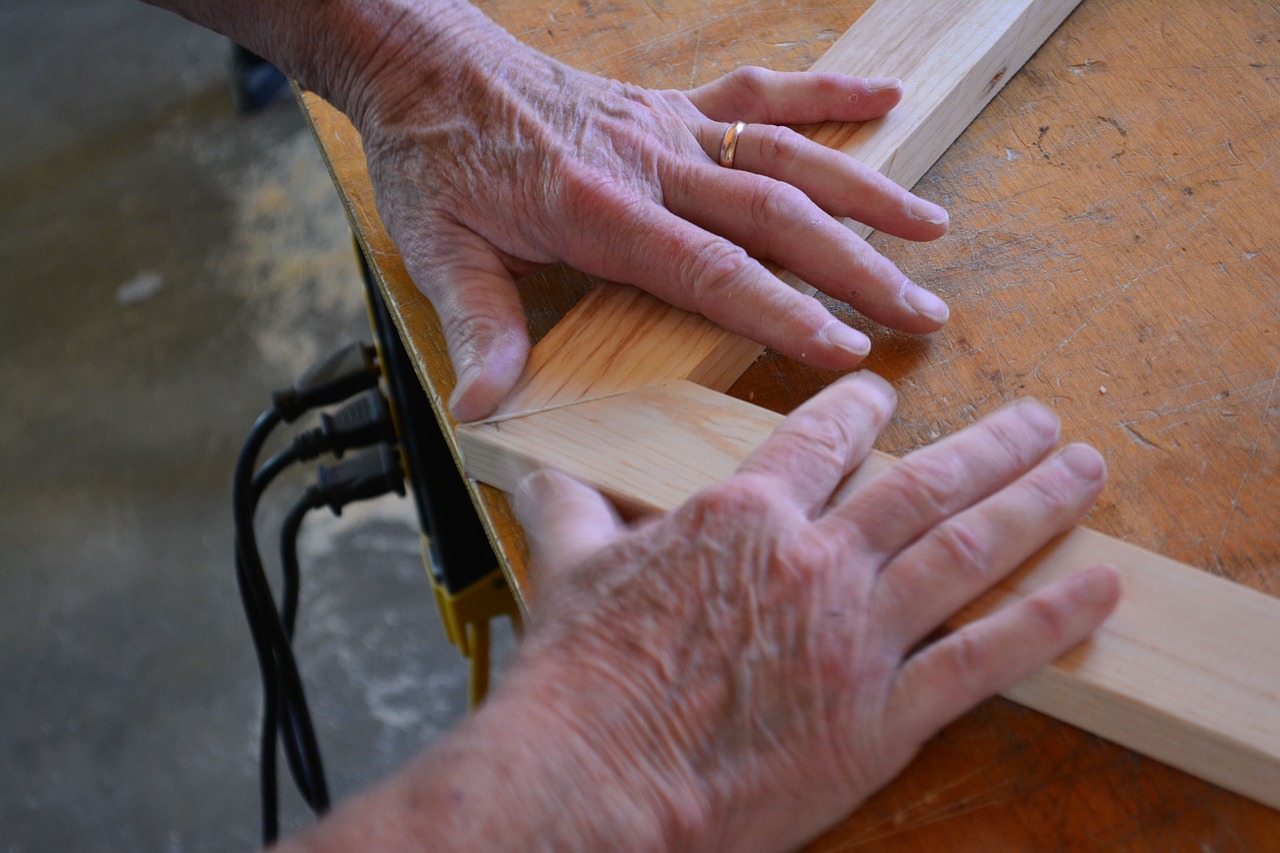
Boosting Confidence Through Crafting
Crafting is not just about creating something beautiful; it's also a powerful way to boost a child's confidence. When children engage in hands-on activities, they experience a sense of accomplishment that can be incredibly empowering. Imagine your child, with paint-smeared fingers and a big smile, proudly displaying their latest creation. This moment of pride is invaluable, as it helps them realize that they can create something from scratch, transforming mere materials into a work of art.
As children work on their projects, they learn to make decisions, solve problems, and overcome challenges. For instance, when a child faces a tricky step in a craft, such as assembling a model or figuring out how to attach two pieces together, they are encouraged to think critically. This process not only enhances their problem-solving abilities but also reinforces the idea that persistence pays off. Each time they figure something out, they gain a little more confidence in their abilities.
Moreover, crafting provides children with a unique opportunity to express themselves. Whether they're choosing colors, selecting materials, or deciding on a design, they are making choices that reflect their personality and creativity. This freedom of expression is crucial for developing a sense of self-worth. When kids see their ideas come to life, it sends a powerful message: “My thoughts and creativity matter!”
Also, sharing their creations with family and friends can amplify this confidence boost. When a child presents their artwork to loved ones, the positive feedback they receive can be a huge motivator. It reinforces the idea that their efforts are appreciated and valued, which can lead to a cycle of creativity and confidence. For example, consider a child who makes a handmade card for a family member. The joy and gratitude expressed in response can encourage them to take on even more ambitious projects in the future.
In addition, participating in group crafting activities can foster a sense of community and collaboration. Working alongside peers allows children to share ideas, learn from one another, and celebrate each other's successes. This social interaction is vital for building confidence, as children realize they are part of a supportive environment where everyone can shine. It's like being part of a team where each member contributes their unique skills to achieve a common goal.
In summary, crafting is more than just an enjoyable pastime; it is a profound way to help children grow in confidence. By allowing them to explore their creativity, make choices, and share their accomplishments, we empower them to believe in themselves. So, whether it's through painting, building, or any other creative outlet, let's encourage our kids to craft their way to confidence!
- How can I start crafting with my child? Begin with simple projects that match their age and interests. Gather materials and set aside time for crafting together.
- What are some age-appropriate crafting activities? For toddlers, consider finger painting and playdough. For school-aged children, try DIY decorations or model building.
- How does crafting help with fine motor skills? Activities like cutting, gluing, and threading require coordination and control, which improve fine motor skills essential for everyday tasks.
- Can crafting be done with natural materials? Absolutely! Incorporating leaves, stones, and twigs can enhance creativity and teach children about nature.
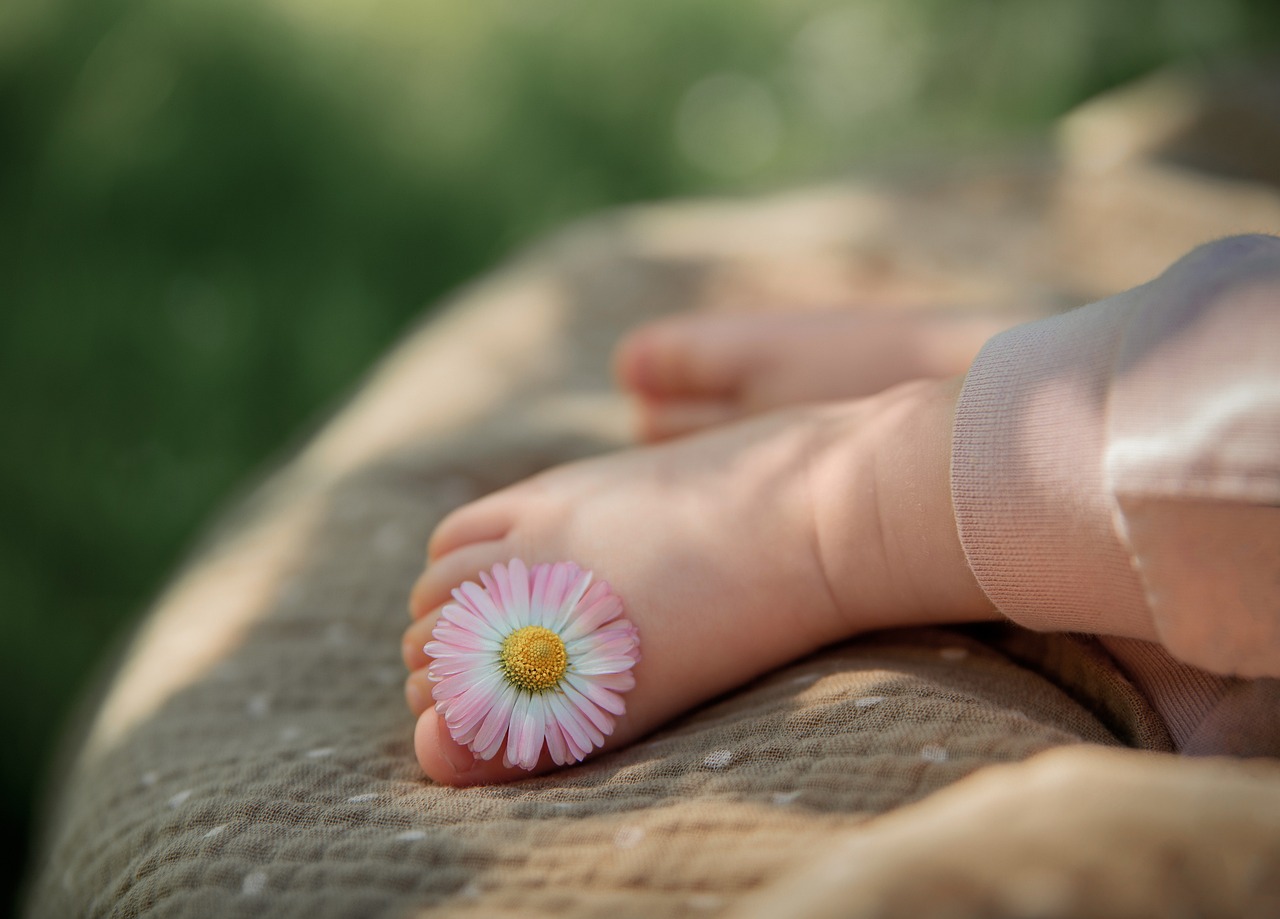
Fun Craft Ideas for Different Ages
Crafting is not just a fun pastime; it's an incredible way to engage children of all ages in creative expression. When it comes to crafting, the possibilities are virtually endless! Tailoring activities to different age groups ensures that every child can find joy in the creative process, whether they're just starting out or are seasoned little artists. So, let's dive into some exciting craft ideas that cater to toddlers, school-aged children, and even tweens!
For toddlers, simplicity is key. Activities like finger painting allow them to explore colors and textures without the pressure of perfection. This not only enhances their sensory experiences but also encourages them to express their feelings through art. Another fantastic activity is playdough modeling. This hands-on experience helps develop their fine motor skills while letting their imaginations run wild as they create shapes, animals, or whatever their hearts desire!
As children grow into the school-aged group, crafting can become a bit more complex and collaborative. Projects like DIY decorations for their rooms or holiday-themed crafts can spark their creativity while teaching them about planning and execution. For instance, making paper snowflakes or creating hand-painted flower pots can be both fun and educational. These projects encourage kids to think critically about their designs and work together with friends or siblings, promoting teamwork and social skills.
For older kids, like tweens, crafting can take on a more sophisticated flair. They might enjoy projects that involve model building, such as constructing miniature houses or vehicles. These activities not only challenge their problem-solving abilities but also allow them to express their individuality through design choices. Additionally, incorporating technology, such as using a 3D printer to create custom designs, can make crafting even more exciting!
Here’s a quick table summarizing some craft ideas for different age groups:
| Age Group | Craft Idea | Skills Developed |
|---|---|---|
| Toddlers | Finger Painting | Sensory Exploration, Color Recognition |
| Toddlers | Playdough Modeling | Fine Motor Skills, Creativity |
| School-Aged | DIY Room Decorations | Planning, Teamwork |
| School-Aged | Hand-Painted Flower Pots | Artistic Expression, Critical Thinking |
| Tweens | Model Building | Problem Solving, Design Skills |
| Tweens | 3D Printing Projects | Technology Skills, Creativity |
Ultimately, the goal of crafting is to allow children to explore their creativity while developing essential skills. By providing age-appropriate activities, you can foster an environment where children feel confident to express themselves artistically. So, gather your materials, roll up your sleeves, and get ready to embark on a crafting adventure that will not only be fun but also enriching for your little ones!
Q: What materials are best for toddler crafts?
A: For toddlers, it's important to use non-toxic and safe materials. Options like washable paints, large crayons, and playdough are excellent choices that encourage exploration without the worry of safety.
Q: How can I encourage my school-aged child to be more creative?
A: Provide them with a variety of crafting supplies and allow them the freedom to experiment. Engage in projects together and encourage them to think outside the box!
Q: Are there eco-friendly crafting options?
A: Absolutely! Using recycled materials, natural items like leaves and twigs, or even repurposing old clothing for crafts can be both fun and environmentally friendly.
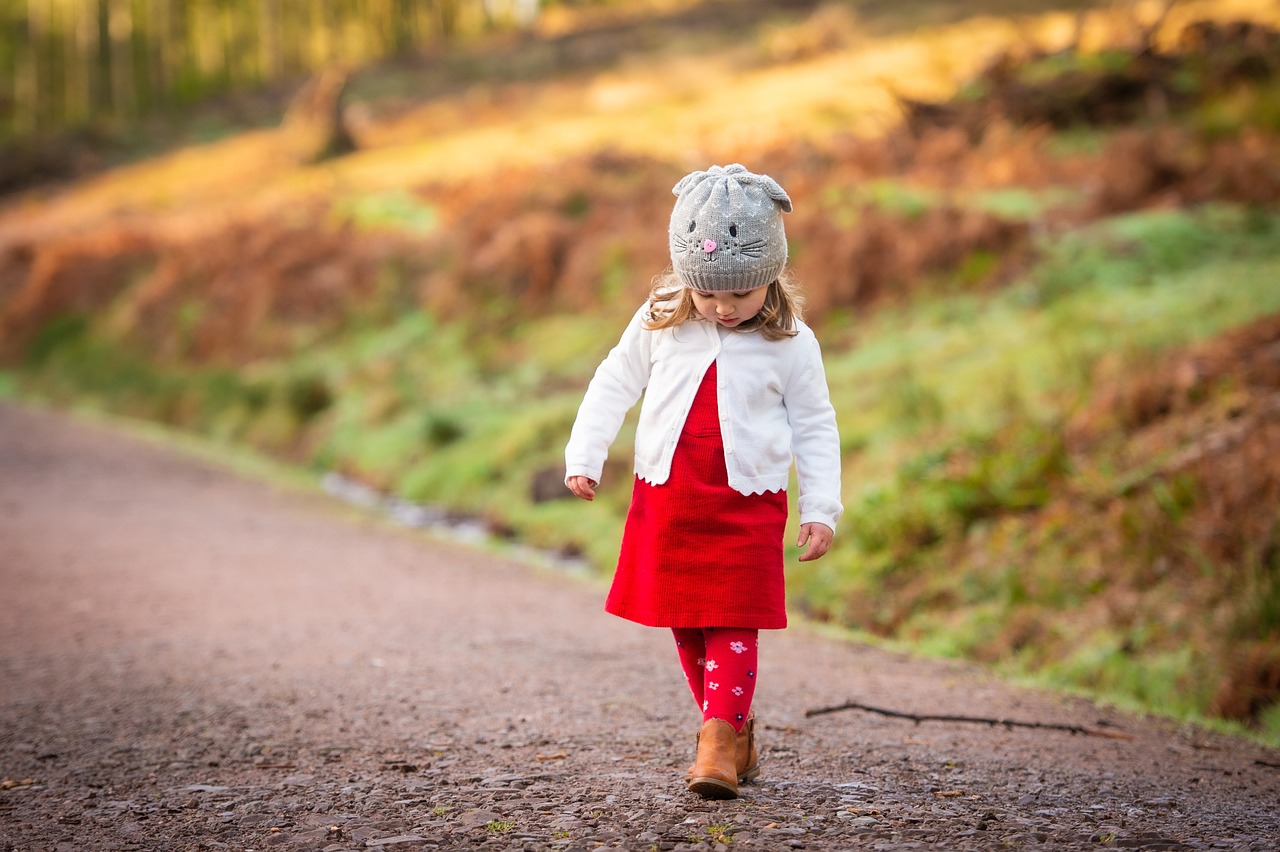
Crafts for Toddlers
Crafting with toddlers is not just about keeping them busy; it's an exciting journey into the world of imagination and sensory exploration! At this age, children are naturally curious and eager to explore their surroundings, making it the perfect time to introduce them to the joys of crafting. Simple activities like finger painting or creating with playdough not only nurture their creativity but also enhance their sensory experiences. Imagine the delight on their faces as they mix colors or mold shapes with their tiny hands!
When engaging toddlers in crafts, it's essential to choose projects that are both safe and easy to understand. For instance, finger painting allows them to express themselves freely while developing their motor skills. They can use their fingers to create beautiful masterpieces on paper, and the best part? There are no wrong ways to create art at this age! Just think of it as a delightful mess that transforms into a cherished memory.
Another fantastic activity is making playdough creations. This versatile material is not only fun to squish and mold but also encourages toddlers to use their imagination. You can even make homemade playdough with simple ingredients like flour, salt, and water. This activity can be a great bonding experience, and toddlers will love the idea of creating something from scratch. Plus, it’s a wonderful way to introduce them to basic cooking concepts!
Here are a few more engaging crafting ideas for toddlers:
- Nature Collage: Collect leaves, flowers, and twigs during a walk and glue them onto paper for a colorful nature collage.
- Handprint Art: Use non-toxic paint to create handprint animals or trees, allowing toddlers to explore colors and shapes.
- Stickers and Stamps: Provide various stickers and stamps for toddlers to create their own unique designs on paper.
Each of these activities not only fosters creativity but also helps toddlers develop essential skills such as fine motor coordination and hand-eye coordination. As they dabble in crafting, they learn to manipulate different materials, which is crucial for their overall development. Plus, the joy of creating something with their own hands can significantly boost their confidence!
As parents or caregivers, it's vital to create an environment where crafting is seen as an enjoyable activity rather than a chore. Set up a crafting corner with easy access to materials, and let their imaginations run wild. Remember, the goal is not to create a perfect piece of art but to enjoy the process and celebrate their creativity. So, grab those paints, playdough, and natural materials, and watch your toddler's creativity blossom!
Q: What materials are safe for toddlers to use in crafting?
A: Always opt for non-toxic, washable materials. Items like finger paints, crayons, and natural materials (leaves, stones) are excellent choices.
Q: How can I encourage my toddler to be creative while crafting?
A: Allow them to explore freely without strict guidelines. Provide various materials and let their imagination lead the way!
Q: What if my toddler loses interest in crafting quickly?
A: Keep the activities short and varied. Introduce new materials or themes regularly to maintain their interest.
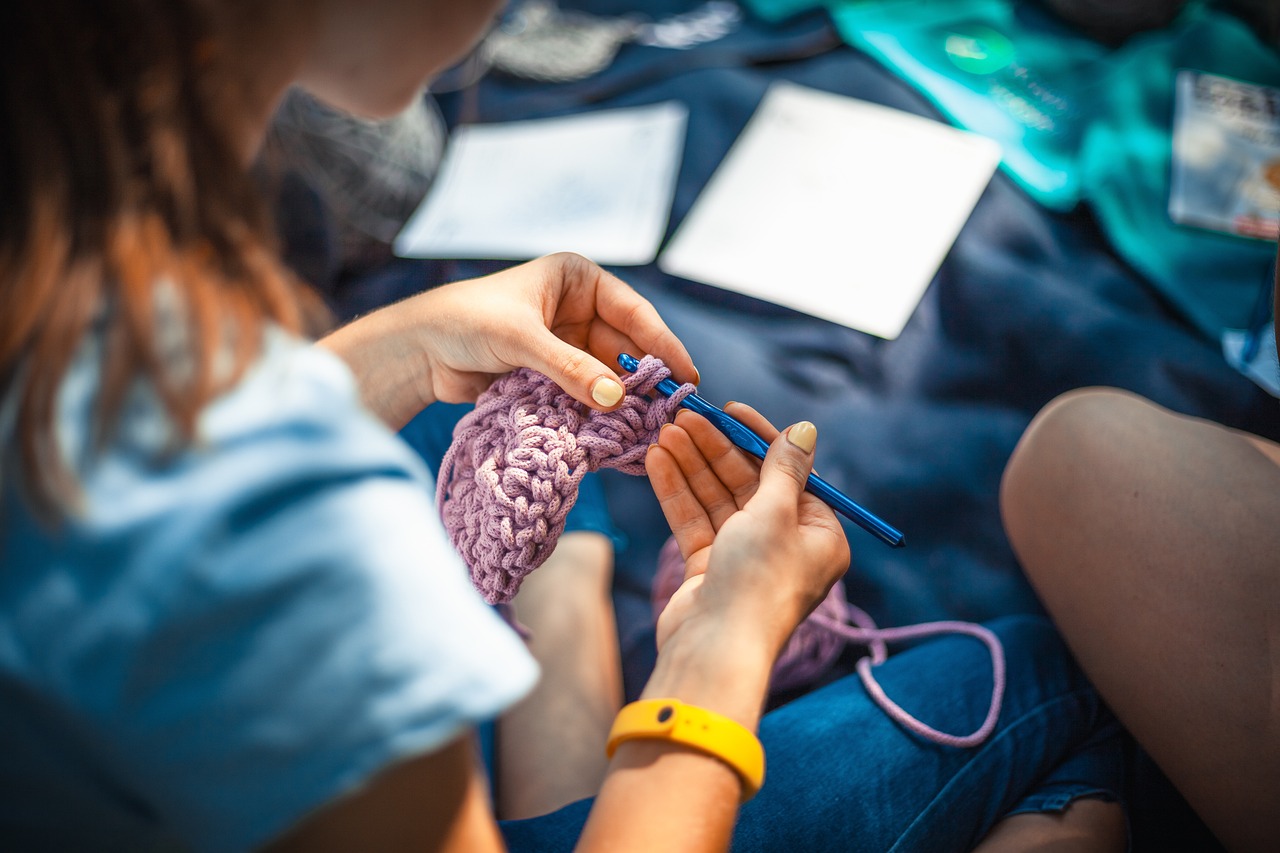
Crafts for School-Aged Children
Crafting for school-aged children opens up a world of creativity and learning that is both exciting and enriching. At this age, children are not just looking for fun; they are also eager to explore their interests and express their personalities. Engaging in more complex projects, such as DIY decorations and model building, can significantly enhance their critical thinking skills and foster collaboration with peers. Imagine a group of kids working together to create a giant cardboard castle or designing their own unique holiday decorations—these experiences not only spark creativity but also teach valuable lessons about teamwork and problem-solving.
One of the most appealing aspects of crafting at this stage is the opportunity for children to choose their projects based on their interests. For instance, a child fascinated by nature might enjoy creating a birdhouse or a terrarium, while another who loves superheroes could design their own comic book. This level of personalization allows children to take ownership of their creations, which can be incredibly motivating. Plus, it gives them a chance to showcase their individuality, something that is vital for their self-esteem and personal development.
When planning crafts for school-aged children, consider incorporating various materials and techniques to keep things fresh and engaging. For example, using recycled materials can turn a simple project into an eco-friendly masterpiece. Children can collect items like plastic bottles, old magazines, and cardboard boxes, transforming them into art pieces that are not only creative but also sustainable. This approach not only fuels their imagination but also instills a sense of environmental responsibility, teaching them that art can have a purpose beyond just aesthetics.
Here are some popular craft ideas that can cater to the diverse interests of school-aged children:
- DIY Decorations: Encourage kids to create their own room decorations, such as painted canvases, paper lanterns, or wall hangings using various materials.
- Model Building: Using kits or simple instructions, children can build models of their favorite vehicles, buildings, or even fantasy creatures.
- Scrapbooking: This activity allows children to express their creativity while preserving memories, making it a fun way to combine storytelling with art.
- Jewelry Making: Using beads, strings, and other materials, kids can create their own unique pieces of jewelry, which they can wear or gift to friends.
In addition to the creative aspect, these crafting activities can also serve as excellent opportunities for parents to bond with their children. Working side by side on a project not only allows for quality time together but also encourages open communication. It’s a chance for parents to learn about their child's interests and thoughts, fostering a deeper connection. So, whether it’s building a model airplane or crafting a scrapbook, the time spent together can be just as valuable as the finished product.
Ultimately, crafting for school-aged children is about more than just making something to display. It’s about nurturing their creativity, boosting their confidence, and providing them with the tools to express themselves in meaningful ways. So grab those supplies and let the creativity flow—your child’s next masterpiece is just waiting to be created!
Q1: What are some easy crafts for beginners?
A1: Simple crafts like paper plate masks, friendship bracelets, or painted rocks can be great starting points for beginners.
Q2: How can I encourage my child to be more creative?
A2: Encourage exploration by providing a variety of materials and letting them choose their projects. Celebrate their efforts regardless of the outcome!
Q3: Are there any safety tips for crafting with children?
A3: Always supervise young children with sharp tools or small parts, and choose age-appropriate materials to ensure a safe crafting experience.
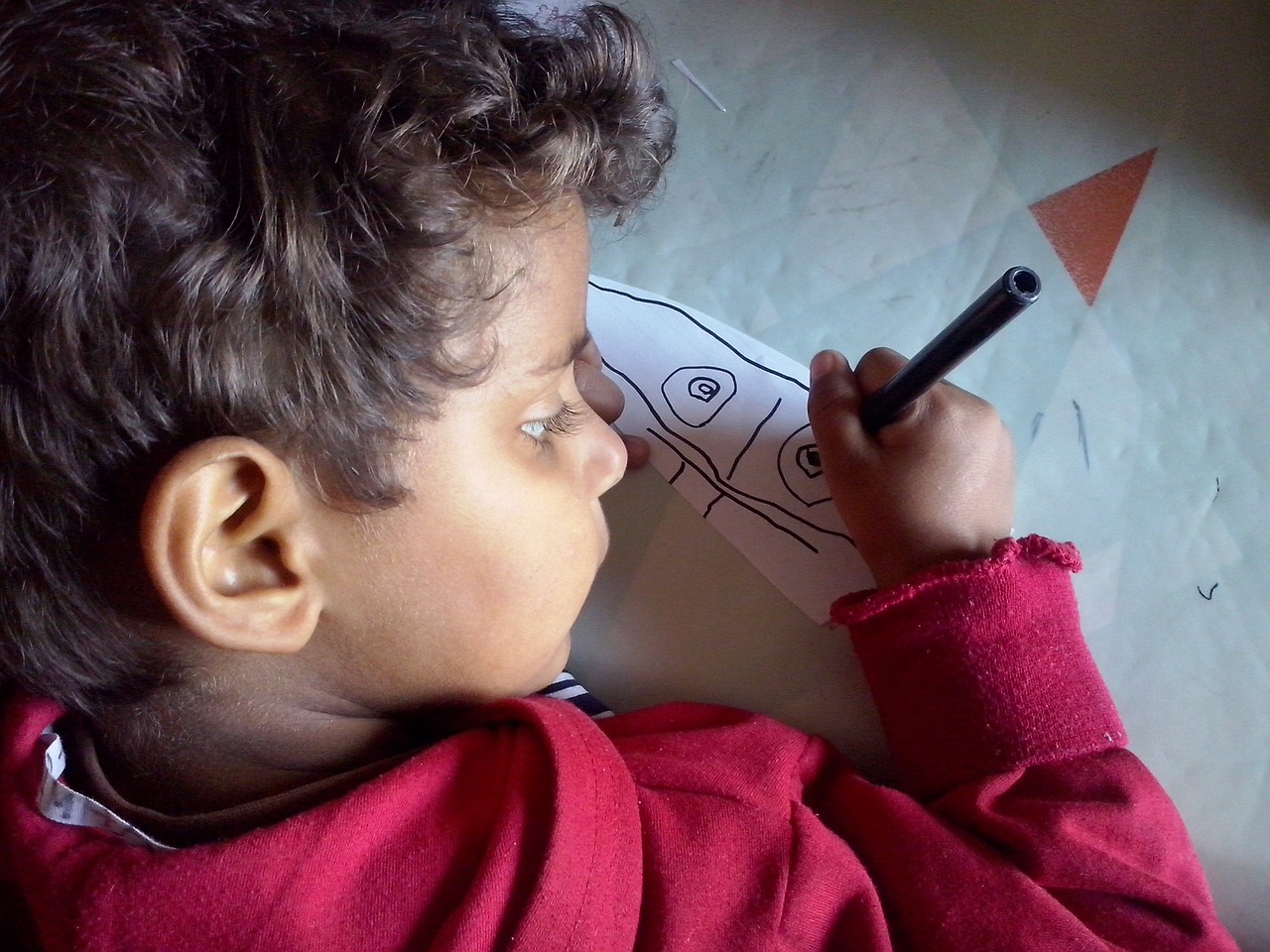
Incorporating Nature into Crafts
In a world dominated by screens and digital distractions, bringing nature into crafting activities can be a refreshing and enriching experience for children. Not only does it spark their creativity, but it also helps them develop a deeper appreciation for the environment. Imagine your little ones wandering through a park, collecting colorful leaves, unique stones, and interesting twigs, all while exploring the beauty of the outdoors. This hands-on approach to crafting not only inspires creativity but also fosters a sense of adventure and curiosity about the world around them.
One of the most delightful aspects of incorporating nature into crafts is the variety of materials available. Children can use items like:
- Leaves: Perfect for making collages or printing.
- Stones: Great for painting or turning into decorative garden markers.
- Twigs: Can be transformed into frames or structures.
By using natural materials, children learn to see the potential in everyday objects and how they can be transformed into something beautiful. This not only enhances their creative thinking but also teaches them about sustainability. For instance, using recycled materials alongside natural finds can create a powerful message about caring for our planet. Imagine crafting a bird feeder from an old milk carton or creating art from fallen branches—these activities not only engage children but also instill values of environmental responsibility.
Furthermore, crafting with nature can be an educational experience. As children gather materials, they can learn about different plants, insects, and ecosystems. For example, while collecting leaves, they can discuss the different types of trees and the changing seasons. This multi-faceted approach to crafting allows children to explore various subjects while engaging their creative minds.
Incorporating nature into crafts can also provide a wonderful opportunity for parents and children to bond. Whether it’s a weekend nature walk or an afternoon spent crafting together, these moments create lasting memories. Plus, the joy of seeing their creations come to life from natural elements can boost a child's confidence and sense of accomplishment.
Encouraging children to collect natural materials for their crafts is not just about gathering items; it’s about fostering a sense of exploration. When children venture outside to gather leaves, stones, and twigs, they engage in a form of play that stimulates their senses and encourages them to observe their surroundings closely. This exploration can be an adventure in itself, as they learn to appreciate the variety of textures, colors, and shapes found in nature. It’s a reminder that creativity can be found everywhere, even in the simplest of things.
Creating art with recycled or natural items promotes not only creativity but also a sense of responsibility towards the environment. Here are some eco-friendly crafting ideas:
- Leaf Prints: Use paint to stamp leaves onto paper for beautiful prints.
- Rock Painting: Turn ordinary stones into colorful decorations or garden art.
- Nature Collages: Combine various natural materials to create stunning collages.
In conclusion, incorporating nature into crafting activities is a fantastic way to enhance children's creativity while teaching them valuable lessons about the environment. By engaging in these activities, children not only create beautiful works of art but also develop a lifelong appreciation for nature and sustainability.
Q1: What age is appropriate for nature crafts?
A1: Nature crafts can be adapted for all ages! Simple activities like leaf rubbings are great for toddlers, while older children can engage in more complex projects like building birdhouses.
Q2: How do I ensure the materials are safe for my child?
A2: Always supervise your child when collecting natural materials. Avoid items that are toxic or harmful, and ensure that any materials used in crafting are clean and safe.
Q3: Can crafting with natural materials be educational?
A3: Absolutely! Collecting materials can provide opportunities for discussions about nature, ecosystems, and sustainability, making it a fun and educational experience.
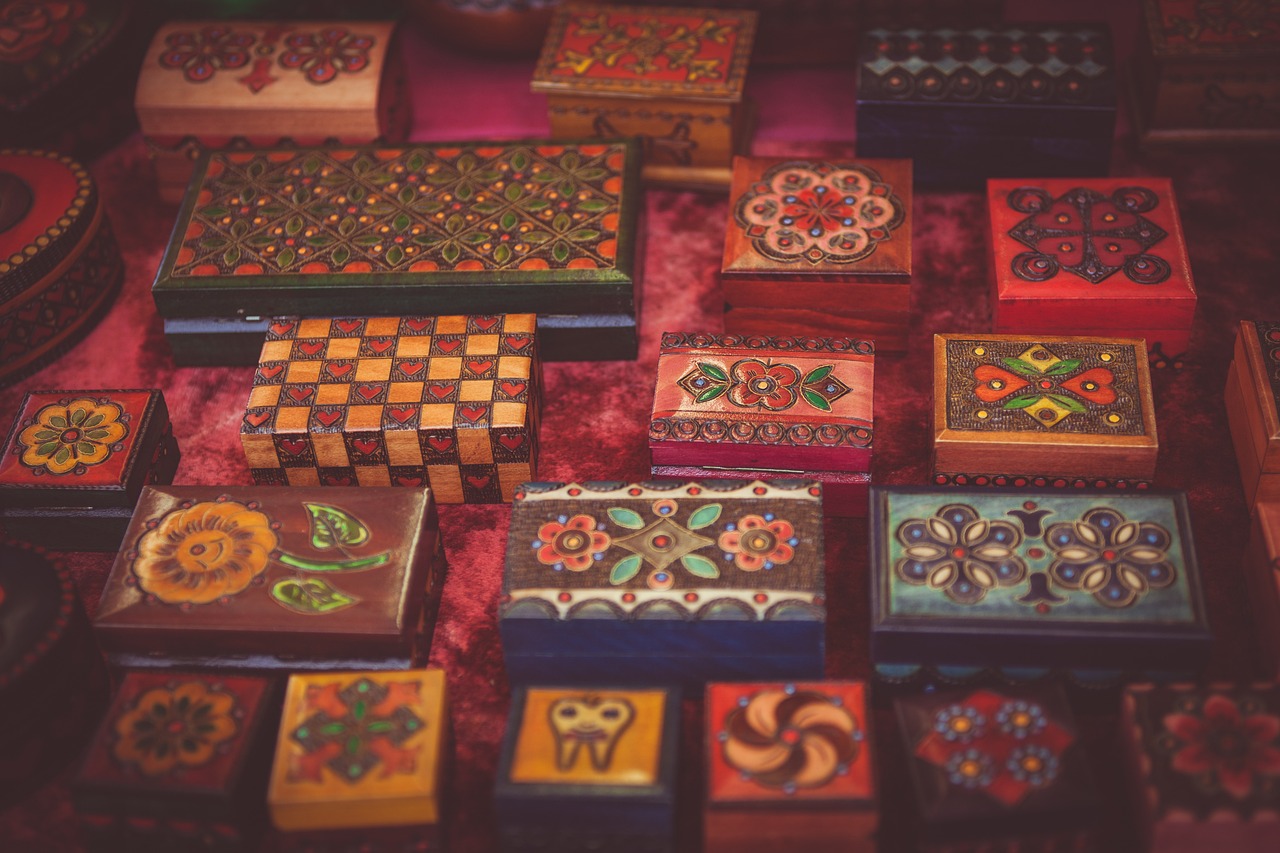
Collecting Natural Materials
One of the most delightful aspects of crafting with kids is the opportunity to collect natural materials from the surrounding environment. This activity not only sparks creativity but also fosters a sense of adventure and curiosity in children. Imagine the thrill on their faces as they explore parks, gardens, or even their backyards, searching for unique items to incorporate into their art projects. The process of gathering leaves, stones, twigs, and flowers can be an exciting treasure hunt!
When children collect natural materials, they engage with the world around them in a tactile and meaningful way. This hands-on experience allows them to appreciate the beauty of nature while developing observational skills. As they sift through the grass or rummage through fallen leaves, they learn to identify different textures, colors, and shapes. It’s a wonderful way to combine learning and play.
To make this activity even more enriching, consider providing children with a collection guide. This could be a simple list of items to look for, such as:
- Different types of leaves
- Colorful flowers
- Unique stones or pebbles
- Twigs of various sizes
- Acorns or pinecones
As they gather these materials, encourage children to think about how they might use each item in their crafting projects. Will that smooth stone become a part of a decorative garden piece? Could those vibrant leaves be transformed into a stunning collage? The possibilities are endless! This not only ignites their creativity but also teaches them to see the potential in everyday objects.
Furthermore, collecting natural materials can serve as an excellent opportunity to discuss environmental awareness. Talk to your child about the importance of respecting nature and only collecting items that are abundant and won’t harm the ecosystem. This instills values of sustainability and responsibility, ensuring that children grow up with a deep appreciation for the world around them.
Incorporating these natural elements into their craft projects can lead to beautiful results. For instance, creating a nature-inspired collage or a decorative wreath can be a fulfilling way to showcase their findings. Not only do they get to express their creativity, but they also develop a sense of ownership and pride in their work. This combination of exploration, creativity, and environmental awareness makes collecting natural materials a truly enriching experience for children.
Q: What types of natural materials are safe for children to collect?
A: Generally, children can safely collect leaves, twigs, stones, flowers, and acorns. It's essential to supervise them and ensure they don't collect anything harmful, such as poisonous plants or sharp objects.
Q: How can I encourage my child to be more engaged in collecting natural materials?
A: Make it a fun adventure! Create a scavenger hunt list, use a magnifying glass to examine items closely, or turn it into a game by setting a timer to see how many items they can find in a specific timeframe.
Q: What can we do with the collected materials once we’re home?
A: There are endless crafting possibilities! You can create collages, nature-themed art, or even use them for educational activities like sorting and categorizing by color or size.
Q: How do I teach my child about respecting nature while collecting materials?
A: Discuss the importance of taking only what is needed, leaving some materials behind for others to enjoy, and explaining why certain plants or materials should not be disturbed.

Eco-Friendly Crafting Ideas
In a world where sustainability is becoming increasingly important, eco-friendly crafting ideas not only spark creativity but also teach children valuable lessons about the environment. Imagine your child creating art while simultaneously learning to respect and care for nature! There are countless ways to incorporate recycled materials and natural elements into crafting projects, making it a fun and educational experience.
One fantastic idea is to use recyclable materials like old newspapers, cardboard boxes, and plastic bottles. Children can transform these items into amazing crafts, such as:
- Cardboard castles: Use old boxes to build imaginative structures.
- Paper mâché: Create sculptures using strips of newspaper and a glue mixture.
- Plastic bottle planters: Cut bottles in half and decorate them for planting flowers or herbs.
Not only does this approach promote creativity, but it also encourages children to think about waste and how they can repurpose items instead of throwing them away. It’s like turning trash into treasure! Additionally, using natural materials, such as leaves, twigs, and stones, can enhance the crafting experience. Children can gather these items during nature walks, fostering a sense of exploration and connection with their surroundings.
Another engaging eco-friendly project is creating nature collages. Children can collect various natural materials, such as colorful leaves, flower petals, and small stones, and arrange them on a canvas or piece of cardboard. This not only stimulates their artistic side but also allows them to appreciate the beauty of nature. It’s a wonderful way to combine art and environmental education!
Incorporating eco-friendly practices into crafting also instills a sense of responsibility in children. By using sustainable materials, they learn the importance of protecting our planet. It’s like planting a seed of awareness that will grow as they do. So, why not start today? Gather some materials around the house or explore your backyard, and let the crafting adventure begin!
Q: What are some simple eco-friendly crafts for kids?
A: Simple eco-friendly crafts include making bird feeders from pine cones and peanut butter, creating recycled paper from old newspapers, and crafting nature collages using leaves and flowers.
Q: How can I encourage my child to be more eco-conscious while crafting?
A: Encourage your child to think about the materials they use. Discuss the importance of recycling and reusing items, and involve them in gathering natural materials during outdoor activities.
Q: Are there any safety concerns with using natural materials for crafts?
A: Yes, always supervise children when using natural materials. Ensure that the items they collect are safe and non-toxic. Avoid using materials that might be harmful, like berries or plants that are not edible.
Frequently Asked Questions
- Why is creativity important for my child's development?
Creativity plays a vital role in a child's growth as it enhances their ability to think critically and solve problems. When children engage in creative activities, they develop skills that help them express their thoughts and emotions, leading to improved self-esteem and confidence.
- What are some benefits of crafting for kids?
Crafting offers a plethora of benefits, including improved fine motor skills, enhanced problem-solving abilities, and increased self-esteem. It's a fun way for kids to explore their creativity while also gaining essential skills that will aid them in daily tasks.
- How can I choose the right materials for crafting?
Selecting age-appropriate materials is crucial for ensuring safety and enjoyment. Look for non-toxic, easy-to-handle supplies that match your child's skill level, allowing them to fully engage in the crafting experience without frustration.
- What are some easy crafts for toddlers?
Simple activities like finger painting, playdough creations, and collage-making with cut-out shapes are perfect for toddlers. These hands-on crafts not only introduce them to the joy of creating but also enhance their sensory experiences.
- How can I incorporate nature into crafting?
Encouraging your child to collect natural materials like leaves, stones, and twigs can inspire creativity and foster a connection with the environment. Using these items in crafts allows children to appreciate the beauty of nature while crafting unique pieces.
- What are some eco-friendly crafting ideas?
Creating art with recycled materials or natural items is a fantastic way to promote sustainability. Projects like making bird feeders from old bottles or crafting decorations from leaves teach children about environmental responsibility while encouraging creativity.



















